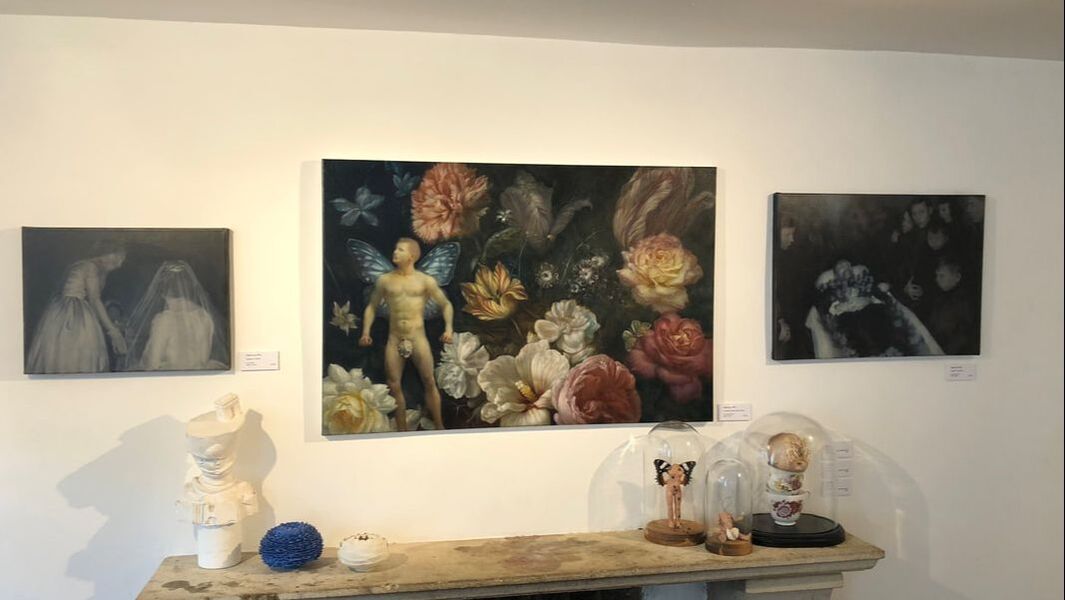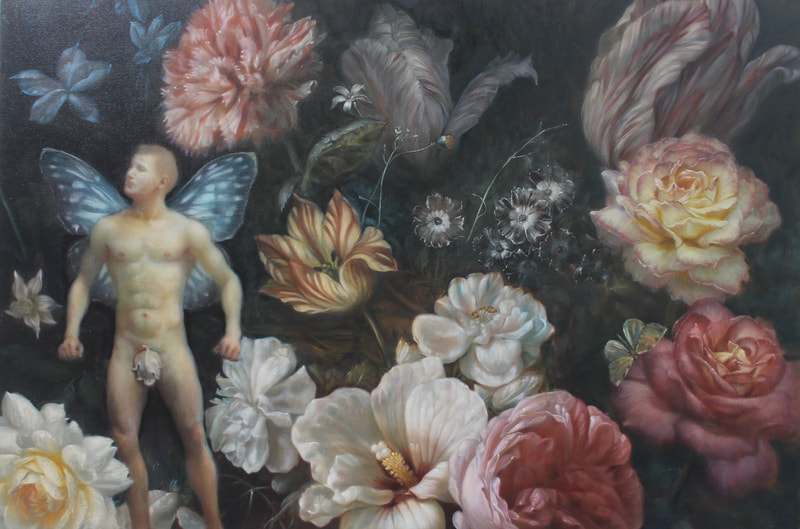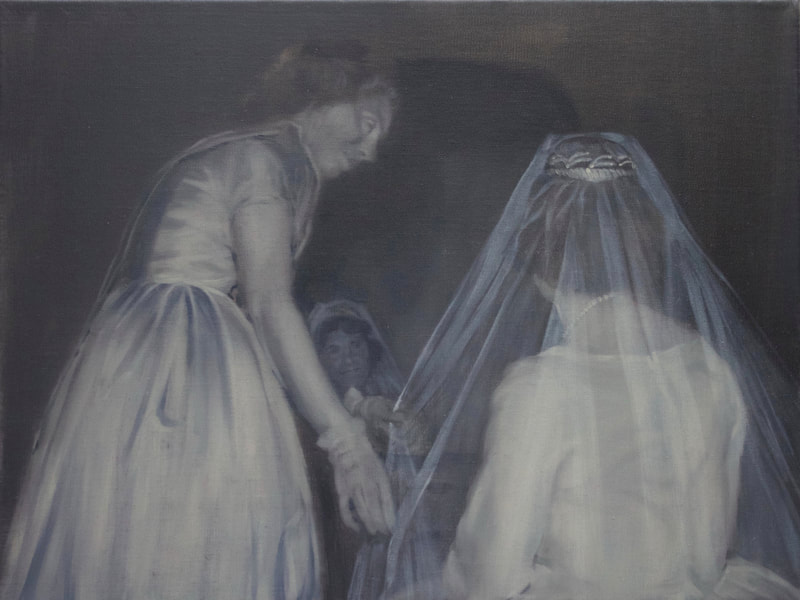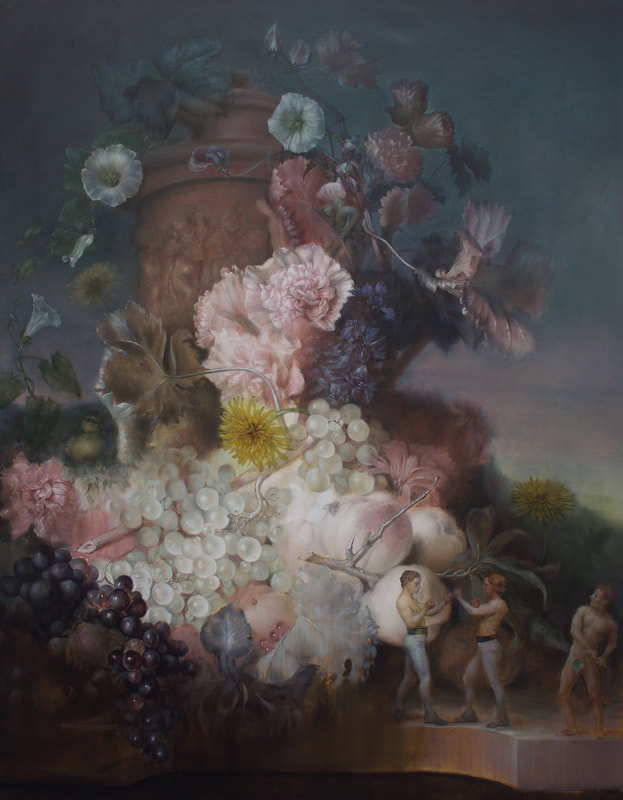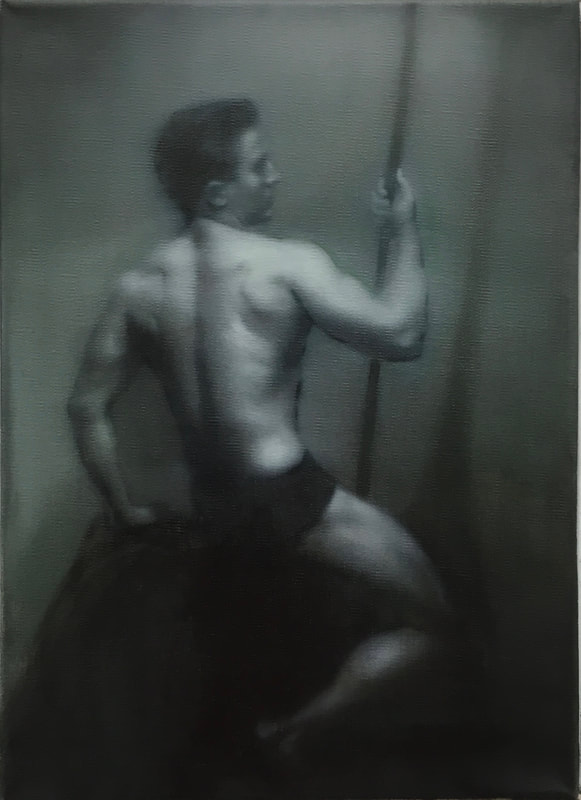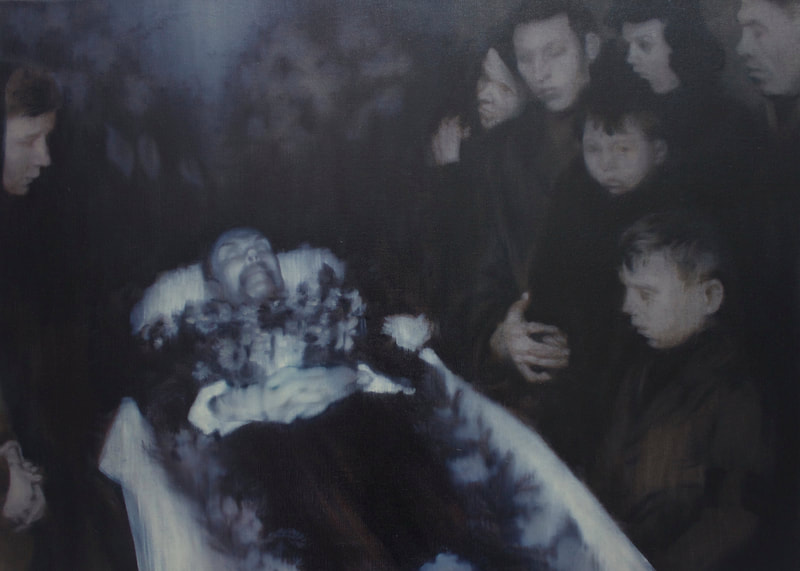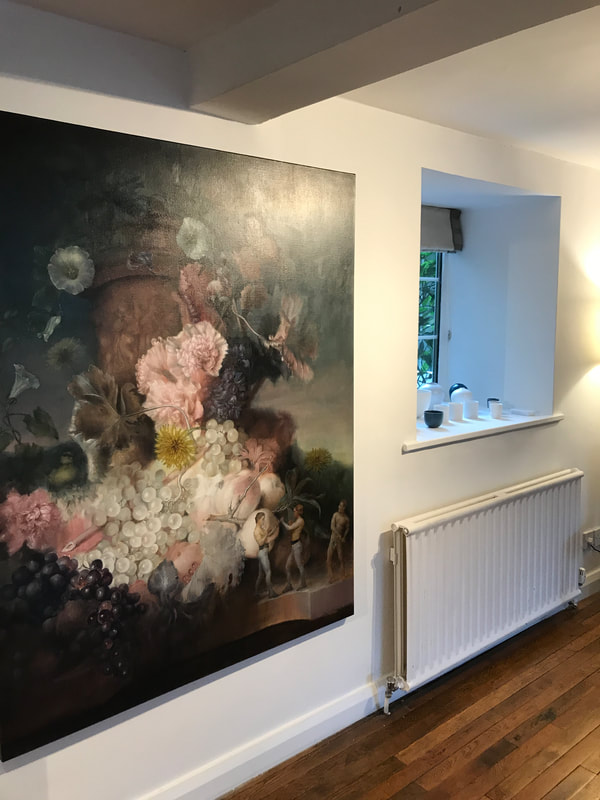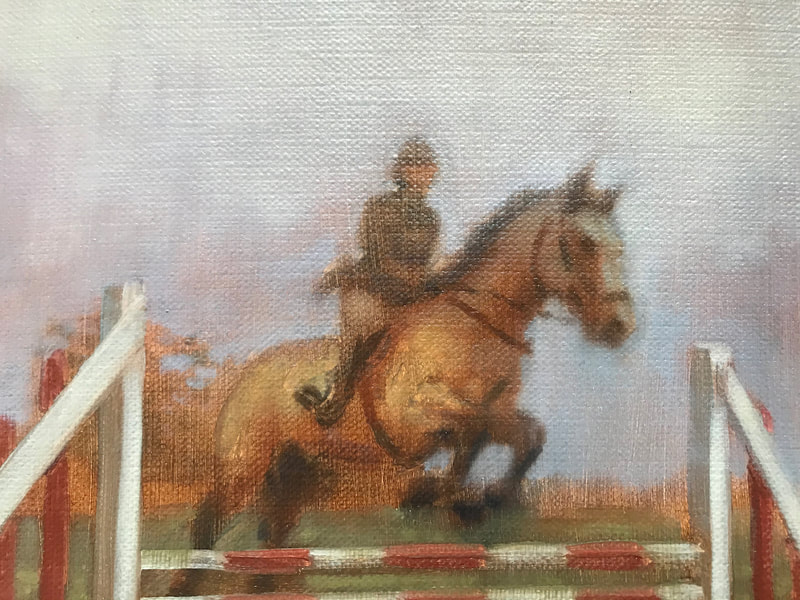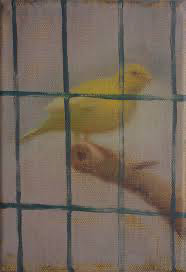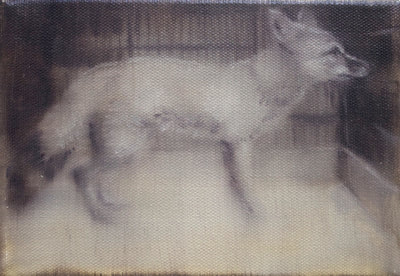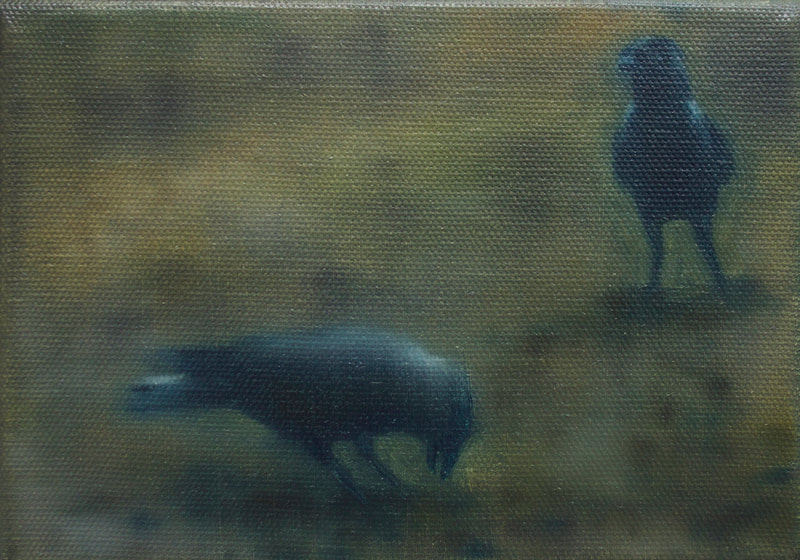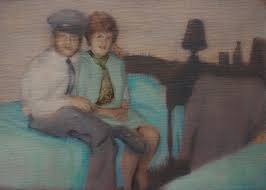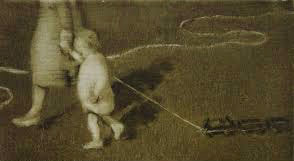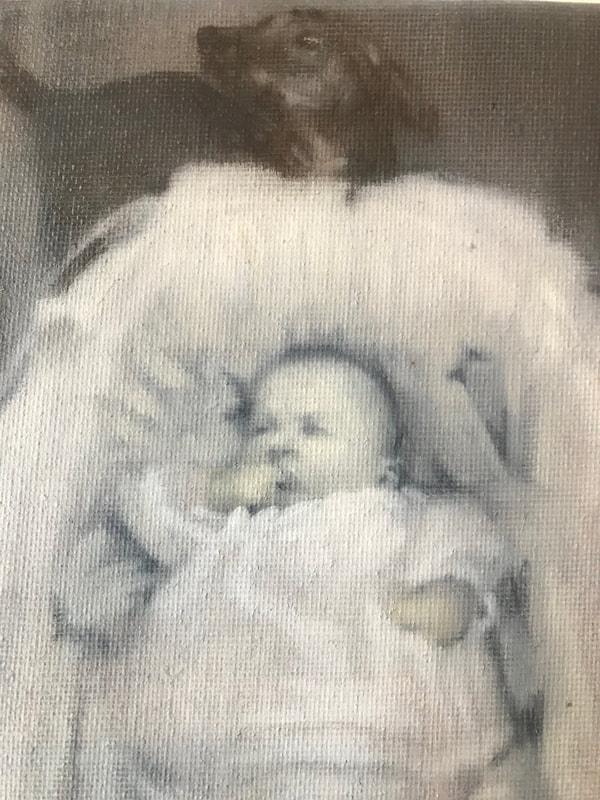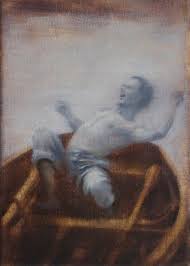“My work explores ideas and subject matter often taboo in art, such as the sentimental, the cute and the nice. The painting style transforms and elevates the original throwaway kitsch image so it cannot be dismissed as merely a “bad painting”. The subject matter is simple, strong and “in your face”. These subverted cliches confront us with our ideas of what is considered “good” and “bad” taste and question our cultural standpoint – the gap between the art world and the creativity of everyone else – “My taste is better than yours”.”
"I work on a variety of ideas at any time which cross influence and inform each other, moving between themes and scales, working from photographs that I collage and manipulate on the computer. I am interested in kitsch and ideas of cultural status as portrayed in the history of Fine Art painting, status symbols exemplified by Stubbs' horses. I use cheap ornaments and imperfect snapshots, repositioning these items within the context of the "Fine Art" world, painting them in oils, converting cheap items to visions of worth and value. Making use of kitsch is not the same as making kitsch. By subverting clichés and removing them from their original disposable status glorifies and immortalises the subject and at the same time can render it disturbing in its absurdity.
The ornaments I use are bought cheaply from charity shops and car boot sales, never for more than a couple of pounds. I search for the pathos or sentimentality within an ornament, finding intrinsic value and worth within discarded and unvalued objects, plus something a little off-key. The ornaments have their own mystery and narrative. Who made it and for whom? Did the creator believe in its artistic value? Who originally bought it? Who threw it out to be finally valued for so little? A history of taste is contained within these little ornaments."
Also related to these concerns with "throwaways" is the more recent work with old photographs bought cheaply from anonymous sources on eBay - the faded, blurred, damaged and indistinct ones. These can have beautiful unplanned qualities. Painting these images renders them, and the unknown people within them, universal and eternal. Her latest work with the butterfly men was brought about by disgust at the macho posturing of some of our current world leaders. This coincided with the finding of some old photographs of body builders. The addition of the wings neutralises the original intention of the pose.
Angela’s work plays with images that have their roots in the disposable kitsch culture of her childhood – an era of knitted swimming costumes, doilies, figurines and plastic flowers. She takes various components from photographs and objects, removes them from their original cosy surroundings, then merges and reforms them with a new emphasis on their peculiarities. Although the final paintings contain a large dose of mockery, the scale and the technique of Angela’s paintings celebrate and elevate a culture that has often been dismissed as inferior.
Read more about the artist here
"I work on a variety of ideas at any time which cross influence and inform each other, moving between themes and scales, working from photographs that I collage and manipulate on the computer. I am interested in kitsch and ideas of cultural status as portrayed in the history of Fine Art painting, status symbols exemplified by Stubbs' horses. I use cheap ornaments and imperfect snapshots, repositioning these items within the context of the "Fine Art" world, painting them in oils, converting cheap items to visions of worth and value. Making use of kitsch is not the same as making kitsch. By subverting clichés and removing them from their original disposable status glorifies and immortalises the subject and at the same time can render it disturbing in its absurdity.
The ornaments I use are bought cheaply from charity shops and car boot sales, never for more than a couple of pounds. I search for the pathos or sentimentality within an ornament, finding intrinsic value and worth within discarded and unvalued objects, plus something a little off-key. The ornaments have their own mystery and narrative. Who made it and for whom? Did the creator believe in its artistic value? Who originally bought it? Who threw it out to be finally valued for so little? A history of taste is contained within these little ornaments."
Also related to these concerns with "throwaways" is the more recent work with old photographs bought cheaply from anonymous sources on eBay - the faded, blurred, damaged and indistinct ones. These can have beautiful unplanned qualities. Painting these images renders them, and the unknown people within them, universal and eternal. Her latest work with the butterfly men was brought about by disgust at the macho posturing of some of our current world leaders. This coincided with the finding of some old photographs of body builders. The addition of the wings neutralises the original intention of the pose.
Angela’s work plays with images that have their roots in the disposable kitsch culture of her childhood – an era of knitted swimming costumes, doilies, figurines and plastic flowers. She takes various components from photographs and objects, removes them from their original cosy surroundings, then merges and reforms them with a new emphasis on their peculiarities. Although the final paintings contain a large dose of mockery, the scale and the technique of Angela’s paintings celebrate and elevate a culture that has often been dismissed as inferior.
Read more about the artist here
A SELECTION FROM AVAILABLE SMALL PAINTINGS APPROX 18CM X 12.5CM from £350

